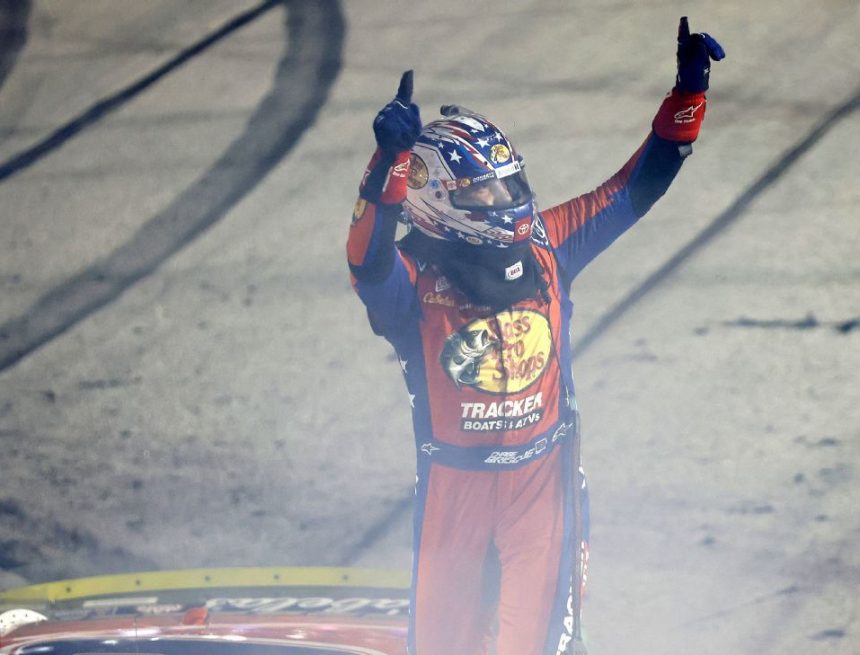There is something sadomasochistic about being a horror fan with a disability. For as long as I can remember, I have been drawn to the intoxicating cycle of dread-terror-release that a genuinely frightening horror film can bring – the simultaneous feeling of “I hate this and want it to end” and “This adrenaline rush is making me feel fully alive.” But I have also come to expect certain tropes that I know will make me feel a different kind of dread, which other people in the cinema may not necessarily be attuned to.
Guillermo del Toro’s handsome adaptation of Frankenstein, which received a 15-minute standing ovation in Venice this August, powerfully makes the case that we ought not to be afraid of difference. However, given that the story is widely regarded as an allegory for disability, it is disappointing that the film stars only able-bodied performers and that a creature repeatedly referred to as “deformed” is portrayed by Jacob Elordi. While the creature is shown to be gentle despite his “obscene” appearance, the audience is heavy-handedly invited to conclude that “the real monster” is his creator, Victor Frankenstein (in case you hadn’t understood the book). Unfortunately the film then drives home the point about Victor’s moral degradation by making him increasingly disabled – in a departure from the original novel, he is given a prosthetic leg, facial scarring and amputated fingers. Del Toro may have adapted the book with a great deal of panache and visual flair, but he has not understood its most basic message.
The portrayal of disability in film generally, especially horror, is famously problematic. While physical beauty is often conflated with a character’s moral goodness, villains have historically been associated with disability or disfigurement: facial scarring, wheelchair use, limb difference. Because of their physical limitations, the logic goes, these characters are likely to become embittered, jealous and calculating, leading to their nefarious deeds. Suffering here does not ennoble but turns people into scheming supervillains who wish to inflict pain on those around them out of malevolence and spite. Neurodivergence and mental illness are routinely equated with violence and deviance.
Over the years, progress has been slow but incremental. Film-makers are more cautious about making antagonists explicitly disabled – the BFI has refused funding for films that feature facially scarred villains – but the prejudice presents itself in subtler ways. A number of recent horror films centre around someone who “doesn’t look quite right”, featuring some variation of exaggerated facial features and ungainly proportions. Minor spoilers ahead: Longlegs (Nicolas Cage in prosthetics), The Substance (Demi Moore in prosthetics), Heretic (scary lady in the basement in prosthetics), Weapons (old lady in prosthetics). In Robert Eggers’ Nosferatu, the vampire’s hands were “custom made” to be “gnarly and weathered. ‘Arthritic’ was a word we looked at,” according to Oscar-nominated makeup effects designer David White. Self-mutilation resulting in disability is another common trope: see Norwegian body horror The Ugly Stepsister, the mother in Luca Guadagnino’s Bones and All, Brendan Gleeson’s character in The Banshees of Inisherin. In Ari Aster’s Eddington, disability is presented as karmic punishment.
In her excellent International Booker-longlisted novel Hunchback, Saou Ichikawa references The History of the Body, edited by Corbin, Courtine and Vigarello: “The ‘criminalisation of the gaze’ that took hold around the dawn of the 20th century had led to the decline of the freak show, which was subsequently replaced in popularity by the Monsters of Hollywood. Now, with costumes serving as an ethical cushion, people can enjoy ogling deformity without guilt or reserve.”
What is perhaps more painful, and insidious, is the portrayal of disability in films not specifically in the horror genre but which trade in a sense of discomfort: arthouse films by respected auteurs, with less emphasis on gore or jump scares than on an undercurrent of psychological unease. In these films, a disabled actor (or an actor in prosthetics) will often appear at a crucial moment as a visual signifier heightening the level of eeriness in a scene. This has happened in some of the best films ever made: the mute, paraplegic girl in Andrei Tarkovsky’s Stalker (referred to as a “mutant”), the “dwarf serial killer” in Nicolas Roeg’s Don’t Look Now, “the disabled one” in Aster’s Midsommar, the gratuitous five-second shot of a facially scarred amputee gleefully clapping along at a Nazi event in Jonathan Glazer’s The Zone of Interest (a modern masterpiece, and one of the most important films of this century). In Yorgos Lanthimos’s remarkable Poor Things, Willem Dafoe’s prosthetics-assisted “deformed … scary face” (as it is described in the screenplay) and Emma Stone’s character’s intellectual disability are not a sign of moral depravity but are nevertheless presented as “creepy and uncanny”. The saddest thing is that these are some of my favourite films. I have no wish to publicly criticise them, but feeling excluded from them is particularly hurtful.
It is exhausting never seeing yourself on screen unless you are used as shorthand for the viewer to feel uncomfortable, akin to the sound of a creaking door or spooky ambient music. There is no shortage of terrifying horror films that don’t resort to othering people who look different: classics such as The Haunting, The Wicker Man and George Sluizer’s The Vanishing, and recent releases such as Get Out, Saint Maud, Presence and Sinners. In the Philippou brothers’ horrifying, wonderful Bring Her Back, the character of Piper is portrayed by Sora Wong, who has limited vision, a casting decision that brings depth and richness to the role. Piper is funny and smart and a little bit mean and not defined by her disability, which is never used as a way to evoke eeriness – while she experiences ableism at the hand of other characters, the audience is on her side.
after newsletter promotion
These films understand that human behaviour is far scarier than human appearance – there is enough horror in the world without needing to punch down. Perhaps this is not something film-makers are doing consciously; viewers may not even notice it is happening. But watching films as someone with a disability can be a singularly lonely experience. Disabled people are hugely underrepresented in film and TV, making up just 2% of the workforce, compared with an average of more than 20% across all other industries; only three disabled actors have won Oscars (compared with 25 able-bodied actors who won Oscars for “cripping up”), and only one director with a physical disability, Crip Camp’s James LeBrecht, has ever been nominated. This means we overwhelmingly see ourselves through others’ eyes, often perpetuating harmful and outdated stereotypes.
The solution – in both film and publishing – is to get disabled writers, directors, actors and creatives to tell our own stories in order to bring a diverse, authentic and meaningful perspective to representation. “Nothing about us without us,” the saying goes. But for the moment, most of us are on the outside looking in, waiting to see whether we ourselves are the monster.
-
Do you have an opinion on the issues raised in this article? If you would like to submit a response of up to 300 words by email to be considered for publication in our letters section, please click here.


